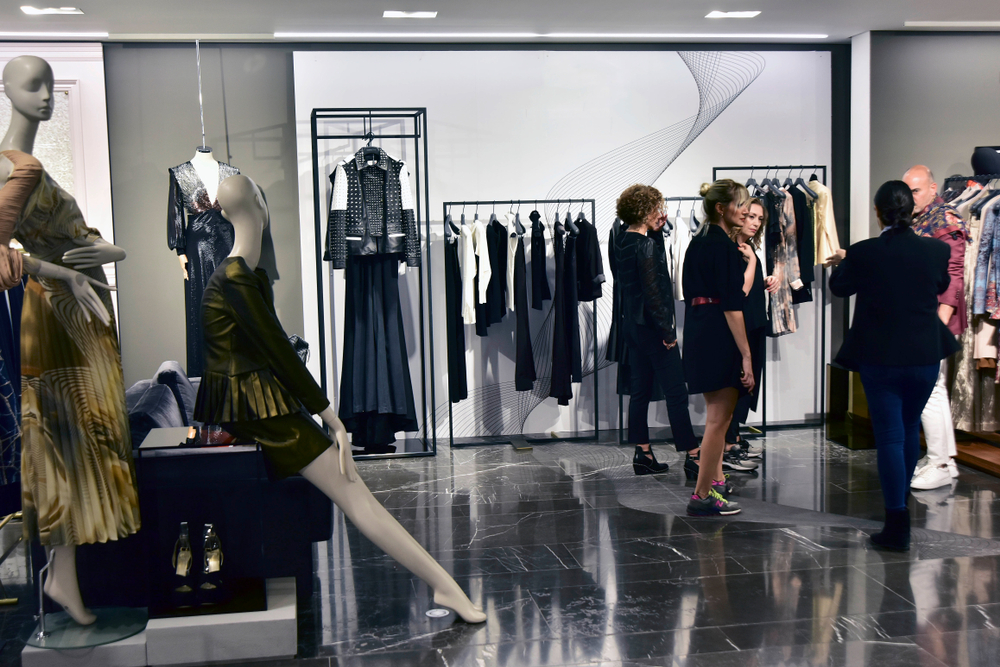- Design industry shaping loyalty programs
- Integrate easily and go live quicker
- Deliver hyper-personalized consumer experiences
Blue Rewards from Al Futtaim Group Shares Loyalty Success Stories and Evolution. Watch Podcast >
Capillary Announces 2nd Annual Captivate 2025 Summit: Transforming Loyalty Management with New AI Tech Read more >

In a sense, the Covid-19 pandemic has changed the way we work, shop and communicate with people more than any other technology in the recent past. As more people start working from home, they are sticking to basics, stepping outside only to buy essentials and are constantly worried about the risks of getting infected in crowded places like malls and supermarkets.
Being associated with Capillary Technologies, which works with the majority of retail brands across India, South East Asia, Middle East and China, I was able to witness these shifts in consumer behaviour and retail trends from close quarters.
Spurred on by a trifecta of smartphone penetration, cheaper 4G networks and increasing consumer wealth, the Indian ecommerce market was expected to grow to US$ 200 billion by 2026.
That projection was based on customer and market research in a pre-Covid 19 world. But in the last 2 months, both the market landscape and consumer behaviour has altered beyond recognition and there is clear indication that the industry will hit the US$ 200 billion mark much sooner.
Some of the key consumer behaviour changes, according to a survey by NRF
While some of these changes are no doubt temporary, others will be permanent. As the community moves beyond the ‘survival’ mode, the digital-adoption momentum is likely to carry forward and become permanent. This inflection point will be primarily shaped by two major shifts in customer behaviour – the reluctance to mingle in crowded public places and higher propensity for digital adoption.
As the recent Mckinsey study in China suggests, consumers are likely to opt for online shopping even after the outbreak ends, especially for categories such as groceries and personal care. This trend is likely to continue long after the lockdowns are called off as people would still be apprehensive to visit crowded areas like malls or supermarkets.
A survey by eMarketer revealed that nearly 60%-85% of internet users across China and South-east Asia have avoided crowded public places to mitigate the risk of contracting the virus.
In short, the Covid-19 outbreak and 2020 will mark a tipping point for the adoption of ecommerce and mobile commerce platforms.
We believe retail is at an inflection point – and this is the start of a “A New World Order” in terms of how consumers shop and the way the retail industry operates. Retailers will need to be agile in adapting to this zeitgeist, since the prognosis for brands that miss inflection points is not great —cases in point, Kodak and Nokia.
Under this New World Order, retailers across diverse categories cannot rely entirely on their offline presence even after the lockdowns are called off. They will have to inevitably adjust to the new norms of online buying. This will become even more relevant for categories like groceries and personal care where previously the propensity to buy online was low.
This “New World Order” as we envision it, could force every retailer to embrace omnichannel ecosystem and converge the operations of their online and offline stores. Not doing so, will mean suffering huge loss in revenues. So who will be the leaders, survivors and laggards in this New World Order?
The leaders would be agile retailers, who upgrade to an omnichannel ecosystem and constantly introduce innovative shopping experiences by analyzing the new buying behaviour. They would be closely followed by the survivors – pure-play digital platforms who have their own e-store and are sell on major online marketplace platforms.
The laggards in this race would be the pure-play offline retailers who are still waiting it out with the hopes that old buying habits and the demand will be restored post the lockdown period.
Prior to the Covid-19 epidemic, traditional enterprise retailers were focused on driving growth, and acquiring market share with physical stores as their epicentre. Increasing traffic to their online store was not a major focus and took a backseat compared to driving footfalls to their physical stores. Brands had made peace with the volume of online orders and the reduced margins from online aggregators as long as the orders kept flowing in.
Historically for omnichannel retailers with both online, offline and marketplace orders (who serviced orders across a physical store, their own e-store and the marketplace) the average orders and the % margin distribution for online orders looked something like this.
*These numbers are based on our research data from our top 10 retail customers across China, South-east Asia, India and Middle east. We have assumed a common 30% commission for marketplace orders and the common margins observed by retailers.
Approximate Online-Offline Split in Buying Trends for Traditional Brands before the Covid-19 Slowdown
| Type of e-orders | Volume of Orders | Margin/order |
| Offline orders | 90% | 70-80% |
| Online orders mainly serviced by aggregators | 10% | 40-50% |
As the consumer behavior changes, retailers will witness an increasing dependency on the online orders. Projecting on some of the behavior and channel mix we are witnessing in markets like China, the volume mix will look something like as depicted in the table below. As dependency on the marketplaces increase (and hence their clout), so will the possible margins being charged by them.
Expected Online-Offline Split in Order Volume and Margins in the New World Order
| Type of e-orders | Volume of orders | Margins/order |
| Offline Orders | 60% | 70% |
| Online + Marketplace orders | 40% | 50-60% |
Retailers will have two options. They can continue to fulfil orders via online aggregators and hence lose a higher chunk towards margin, and affecting bottomline. Or they can set up their own brand.com in order to restrict the revenue bleed (not to mention also reaping other long lasting benefits viz. fostering brand loyalty etc.). Nike pulling back from selling on Amazon to focus more on its direct-to-consumer business being a case in point.
As much as I claim that the New World Order will be ruled by online buying patterns, we also realize being innovative with different store formats can become a differentiator for brands competing in similar categories.
For instance, an omnichannel retailer can differentiate itself from online aggregators by transforming few of the stores into experience zones to offer an experiential buying experience. We will see more of such strategies being deployed by brands on the lines of omnichannel furniture retailers like Urban Ladder and Pepperfry, but in more diverse sectors
In these times of crisis, retailers are increasingly using physical stores as fulfillment centers to turn inventory over quickly and cut losses. Omnichannel retailers, who innovatively utilize their physical store space will inevitably be the winners of this new world order.
With continued uncertainty, I predict that brands that are currently the most receptive and agile in adopting these new norms of customer behaviour will prevail than those who wait it out. So, what can retailers do to cope with these constantly changing buying patterns and quickly cope with the new world order.
Based on data from our clients in China, the Covid-19 crisis has clearly favoured omnichannel retailers when it comes to minimization of the negative impacts. Therefore, offline retailers must approach the lockdown period as an opportunity to build a strong online presence.
Retailers with an online presence, must capitalize on the recovery trends by introducing innovative ways of fulfilling orders – be it establishing an Online-to-Offline(O2O) platform or building sophisticated digital logistics and payment reconciliation capabilities to be in the lead in this race to recovery.
The only way retailers can combat the increasing order volumes and diminishing margins from their online aggregator counterparts would be to focus on improving the visibility of their e-store.
As part of these efforts to improve online visibility at a reduced cost, brands should also capitalize on their existing customer data to drive traffic to their own online website. This involves using robust retail CRM and marketing automation systems to take control of existing customer data.
Brands will need to improvise and capitalize on online personalization efforts to differentiate themselves from their competitors and online aggregators. Personalized engagement will play an important role especially in selling essential category items (groceries, medicines and personal care/wellness items) as consumers seek increased communication and trust about the quality of these products.
Brands can deploy personalized engagement beyond discounts or offers by keeping their consumers posted about their internal developments – be it about the store operations in their nearest neighbourhoods or even to just convey words of empathy and care about the current situation. For instance, restaurants can actively communicate about the hygiene steps they’ve taken to increase confidence amongst customers. Personalized engagement platforms can enable brands to also communicate about shifting their operations online and reallocate some of the store credits that can be redeemed online.
To sum it up, we all knew the world was turning digital. A new order was being established. But for all we know, the pace has suddenly increased exponentially. It is at our doors, knocking down the traditional walls right now, as opposed to by 2030 as we all were expecting. This New Order will require a paradigm shift in strategy from brands. Only the agile ones will survive. Only the ‘Truly Omnichannel’ ones will prosper.

April 20, 2020 | 4 Min Read
In a sense, the Covid-19 pandemic has changed the way we wor

March 30, 2020 | 4 Min Read
Predicting the Road to Recovery: Key Findings & Insights for